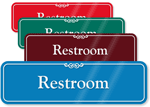Women still struggle to bridge the gender pay gap
Though women are now increasingly surpassing men in higher education and have managed to penetrate traditionally male-dominated occupations, an obvious pay gap still exists between the two sexes. Several factors contribute to this continuing trend in the U.S. and other countries, but gender and racial discrimination have been identified as the biggest culprits.
In 2012, women working full-time all year around in the U.S. earned 77 percent of men’s earnings. The number rose by a mere percentage in 2013. A study by Wells Fargo shows that the median annual income for college educated, millennial men is $83,000 as compared to $63,000 for millennial women with the same education level, revealing a gaping pay discrepancy of $20,000 annually.

Although women are catching up to men in traditionally male-dominated jobs, they aren’t catching up to their wages. From Salford University
This pay gap can start as early as the first job, contradicting the notion that women are paid less because of pregnancy breaks. Although critics argue that wage differences stem from job tenure and hours worked, in most workplaces there is no real reason for the difference in salaries between male and female employees, except gender discrimination. Comparing the wage data of men and women with identical degrees and experience, Harvard economist Claudia Goldin has found that “gender discrimination is ultimately at the core of the gap.”According to the American Association of University Women (AAUW), the pay gap is worse for women of color, as evidenced by the salaries of Hispanic women compared to those of white men.
The gender pay gap can be witnessed countrywide, with Louisiana emerging as the worst state in the country for pay equity (with women earning just 66 percent of men’s salaries). However, some states fare better than others: Women in Washington D.C. earn 90 percent of men’s salaries.
The wage gap problem also plagues other nations, as per a recent report from the International Labor Organization (ILO). The study has revealed earning gaps of 4 percent to 36 percent across a sample of 38 nations, with Belgium and Estonia ranked as the countries with the highest ‘unexplained’ wage gap.
Bridging the wage gap will require collaborative measures in the workplace. A report on gender pay gap by the White House Council of Economic Advisers suggests implementing policies like paid family leave and flexible work schedules to help increase participation and experience over time. “Overcoming unequal pay between men and women is crucial to ensuring inclusive growth and requires sustained efforts at various levels,” says the ILO’s Manuela Tomei. Breaking cultural and social stereotypes associated with women is essential for organizations to achieve wage equity.
Category: Uncategorized











